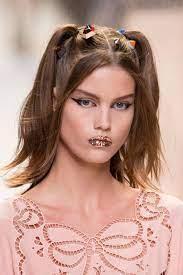
Individuals with 1a Hair have fine, ultra-sleek locks without much volume, yet possess an undeniably shiny natural sheen. Styling 1a locks typically involves volumizing shampoo, conditioner, and lightweight gels or sprays. Greasy hair can be a common complaint among those with type 1a, since its straight strands tend to accumulate oils quickly and weigh them down quickly. To minimize this problem, washing your locks every three or four days should help.
Fine Strands
Type 1a hair stands out with its ultra-fine texture. Strands from root to tip are pin-straight without any hint of wave or curl, making achieving volume difficult due to thin strands. Consider getting a blunt bob or opting for balayage to add dimension and dimension to your straight strands. Regular trims will ensure dead or brittle ends don’t make your locks appear thinner or limp. As your strands are so delicate, they’re easily affected by heavy styling products and natural sebum buildup that can cause them to appear flat-looking. Therefore, using a clarifying product such as WOW’s U: DRY Clear Dry Shampoo once every week to clear away buildup and refresh your scalp for healthier-looking locks – and as an added benefit, this also prevents overwashing, leading to oilier waves!
No Curls or Waves
Type 1a hair features straight, pin-straight strands without any waves or curls, naturally silky textures, and has the lowest density per square inch of all the textures available. 1a Hair tends to be more lustrous than curlier or more relaxed varieties due to the natural oils being distributed freely through each strand without becoming trapped by knots and blocks, unlike when dealing with curlier textures. Furthermore, 1a hair tends to be less susceptible to frizz on wet and humid days than curlier alternatives. Your fine strands need to be manageable with too many products or shampoo; doing so can cause the scalp to overcompensate by producing excess oil, leading to flat and greasy locks. Try washing your hair every two or three days using only a conditioning rinse. Dry shampoos may also help absorb any excess oil that accumulates between washing sessions.
Thinness
1a hair is thinnest of all types but boasts impressive shine and holds curls well. Furthermore, its stick-straight nature allows oils produced by the scalp to travel easily down each strand for that healthy, glossy appearance. However, these strands tend to look limp when dry. Utilizing products enriched with natural oils like coconut oil will help tame frizz and flyaways and give your strands more body. Reducing breakage by not applying too much tension when styling your hair can help preserve its health. Wear a loose ponytail or braid instead for best results, and shampoo only every three days; dry shampoo can be used between washes as an aid against grease buildup.
Dryness
1a hair can often feel dry and brittle without its natural oils from your scalp, becoming oilier faster than other types of locks and necessitating frequent washes to maintain its integrity. It would help if you planned to shampoo every two or three days. People with wavy (Type 2) and curly hair types typically possess thicker textures, making them less susceptible to dryness than Type 1 hair types. Their waves help retain more moisture than their counterparts from Type 1, too. If you have 1a Hair, avoid shampooing too often as this will deplete its natural oils, prompting your scalp to overcompensate by producing more oils that could leave it greasy and flat. Instead, opt for products with natural ingredients, as these will prevent buildup while leaving your strands feeling lighter and healthier.

